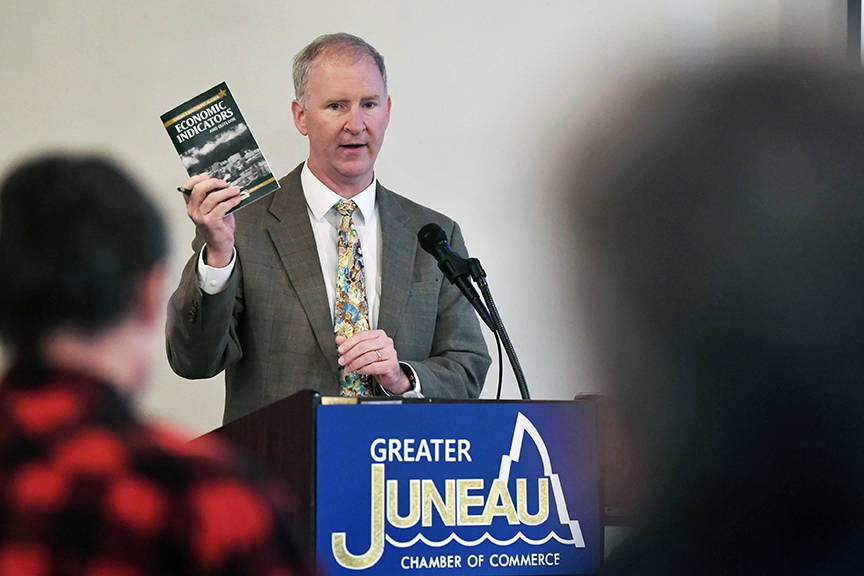The overall picture of Juneau’s economy is pretty good, according to the Juneau Economic Development Council’s annual report. Data from the report was presented by the council’s executive director Brian Holst at the Juneau Chamber of Commerce Luncheon at the Moose Family Lodge on Thursday.
“Today we’re all a little bit richer,” Holst told the crowd, referring to the Permanent Fund Dividend checks which started being distributed Thursday. “PFD’s are good for the local economy,” he said.
Holst ran through a presentation of JEDC’s Economic Indicators and Outlook report for 2019. That report gathers a variety of data points which affect Juneau economy, from population and unemployment numbers to restaurant and retail sales.
Check out the Empire’s live coverage of the event.
“Mining is really, really important for Juneau’s economy,” Holst said. Mining and tourism were the two largest growth industries for the region. Holst said that three sectors of Juneau’s economy — state government, local government and mining — contribute to almost half of Juneau’s wage and salary earnings, as much as all other sectors combined.
However, the loss of government jobs continued to be a drag on Juneau’s economy, according to Holst.
“It’s eight years straight of decline in government jobs,” Holst told the Empire. “That’s federal, state, local and tribal all together.”
According to JEDC’s data the largest loss of government jobs occurred in 2016 when 239 jobs were left. In 2018 Juneau lost 74 jobs across state, local and federal governments.
Also of concern was the Juneau’s winter economy. There was a gap of 2,800 jobs between July and December, Holst said, adding that it would benefit the town to look at ways of developing the winter economy.
Tourism was the most obvious industry to do that Holst told the crowd. Tourism is growing and Alaska is an increasingly popular destination. Attracting visitors to the city in winter could provide more year-round employment.
Holst said that one of the more important things for the economy was attracting people to Juneau and keeping them here. This was particularly important for younger people.
People ages 20-39 showed a lot of entrepreneurship, something which is an important driver of local economies.
“It’s critical that we look at growing entrepreneurship,” Holst said, “you need to encourage people to take risks in your community.”
Keeping young people in Juneau was important as the senior population is growing. According to JEDC data, Juneauites ages 60 and up make up 20 percent of the population and are on track to be 24 percent by 2025.
Senior citizens create a demand for health care, an industry which has seen wage growth but also job loss. Holst noted that the largest single driver of cost of living for Juneau was the cost of health care, followed closely by housing, according to JEDC data.
Overall, Juneau’s economy was in good standing. Even with the loss of government jobs, Holst said, the private sector had been able to provide compensation for those lost jobs.
JEDC’s economic indicators reports are available at the council’s website.
• Contact reporter Peter Segall at 523-2228 or psegall@juneauempire.com.

